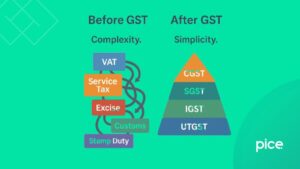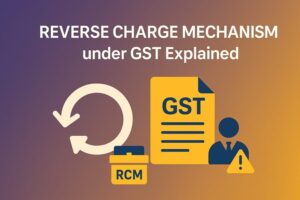Timeline for GST Registration Approval
- 9 Apr 25
- 11 mins

Timeline for GST Registration Approval
- Eligibility for GST Registration
- Types of Registration Under GST
- GST Registration Process
- Factors Impacting Time of Approval for Registration Applications Under GST
- GST Registration Using Authentication of Aadhaar
- Strategies to Expedite GST Registration Approval Time
- Typical Timeline for GST Registration Approval
- Penalties from Tax Authorities for Not Registering Under GST
- Conclusion
Key Takeaways
- GST registration is mandatory for businesses exceeding the turnover threshold of ₹10–₹40 lakhs, based on their location and category.
- The registration process involves online application, document submission, and verification, with an option for Aadhaar-based authentication.
- Approval timelines range from 7 to 30 days depending on Aadhaar authentication and document verification procedures.
- Accurate details, clear documentation, and timely responses to GST authorities can expedite registration approval.
- Failure to register under GST may attract penalties up to 100% of the unpaid tax amount for willful defaults.
Goods and Services Tax (GST) registration is a crucial step for businesses in India to comply with tax regulations. Whether you are a new entrepreneur or an existing business expanding operations, submitting application for registration for GST is mandatory if your turnover exceeds the prescribed threshold.
The GST registration process is designed to be seamless and efficient, but applicants often wonder how long it takes for approval. Typically, the approval timeline depends on document accuracy, verification procedures, and department workload. Knowing the step-by-step timeline can help businesses plan operations accordingly and avoid delays.
So, in this article, we will discuss the GST registration eligibility criteria, timeline and process to help you experience a seamless journey.
Eligibility for GST Registration
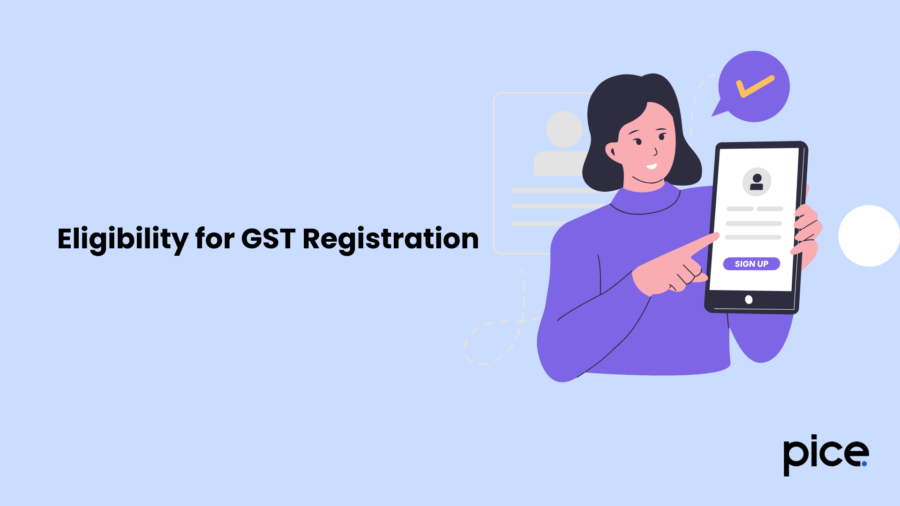
Businesses with an aggregate annual turnover of ₹10 lakhs, ₹20 lakhs or ₹40 lakhs (as applicable) need to register themselves under GST as ordinary taxable people. Here are the eligibility criteria for GST registration:
● Individuals or entities registered under earlier tax services (registered persons)
● Non-resident taxable persons
● Casual taxable persons
● Taxpayers under the reverse charge mechanism
● E-commerce aggregators
● Entities with annual turnover of more than ₹40 lakh or ₹10 lakh (for Uttarakhand, Jammu and Kashmir, Himachal Pradesh, and North-Eastern states)
● Input Service Distributors
● Supplier agents
● Individuals supplying goods using e-commerce platforms
● Entities or individuals rendering online information and database services to individuals in India from abroad
Types of Registration Under GST

To know the types of GST registration in detail, read below:
Normal Taxpayer
The majority of Indian businesses fall under the normal taxpayer category, wherein they can be regular taxpayers without any deposit. Registration for this category of taxpayers does not expire.
Casual Taxable Person
A casual taxable person is an individual opening an interim stall or shop. As a taxpayer, you need to pay a deposit amount equivalent to the GST liability for the tenure of your shop’s opening term. You need to register within 3 months of the initial GST registration period. The GST Council allows extensions for renewal after the first registration.
Composition Taxpayer
Under the composition scheme of GST, individuals cannot offer input tax credits; however, they need a fixed deposit. These individuals need to register under GST under the mentioned scheme.
Non-resident Taxable Person
Non-resident taxable persons are individuals residing abroad while dealing in taxable goods or services in India. The deposit amount varies significantly; however, it is extendable or renewable.
GST Registration Process
Following is a detailed guide on GST registration process:
Step 1: Go to the unified GST portal.
Step 2: Navigate to the 'Taxpayers' tab and click 'Register Now'.
Step 3: Select the registration type and click 'New Registration'.
Step 4: Enter necessary details such as business information, PAN card number, mobile number and email address.
Step 5: Verify your identity by entering the OTP you receive on your registered mobile number and email address.
Step 6: Note the 'Temporary Reference Number' (TRN) displayed on your screen.
Step 7: Log into the official GST portal again. Under the 'Taxpayers' option, click on 'Register,' followed by selecting the TRN.
Step 8: Fill in the TRN and captcha details before you click 'Proceed'.
Step 9: You must complete the verification process by entering the OTP you receive on your registered contact details. Ensure you verify the application status and make necessary amendments (if applicable).
Step 10: You must fill in the necessary details and upload supporting documents (mentioned below).
Step 11: You need to submit your application on the 'Verification' page using EVC (Electronic Verification Code) or DSC (Digital Signature Certificate).
Step 12: Upon successfully completing the online registration process, you will receive an Application Reference Number (ARN) on your registered contact details. Notably, the ARN is also on your screen, along with the registered mobile number and email address.
Step 13: You can track the ARN status on the official GST portal to understand the GST registration completion status.
Supporting Documents Required for Upload
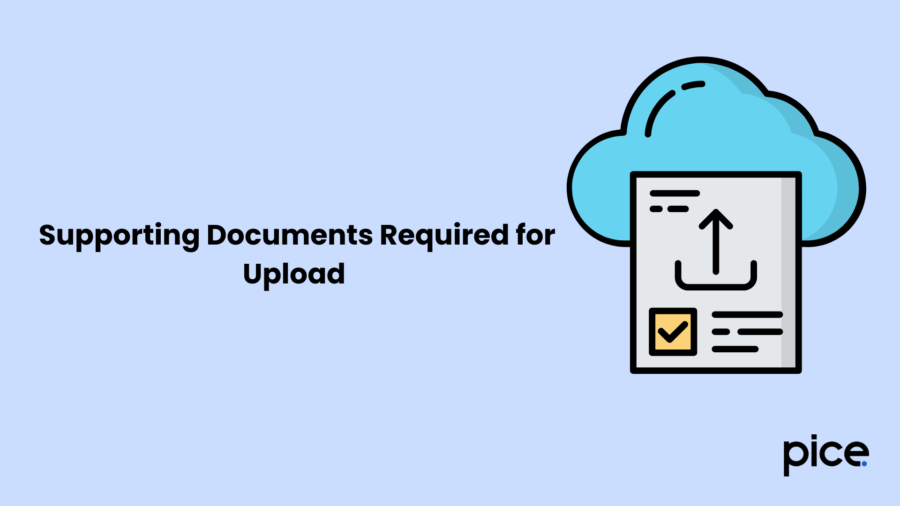
Here is the list of supporting documents that you need to upload (as mentioned in Step 10):
● Pan card
● Aadhaar card
● A cancelled cheque and bank account details/bank statement
● Proof of business address/ company address
● Certificate of Incorporation (from Ministry of Corporate Affairs) and business registration proof
● Digital Signature (if you use the DSC mode)
● Identity and address proof of directors and promoters
● Photographs of directors and promoters
● Board resolution signed by the authorised signatory or a letter of authorisation (signed by the authorised signatory)
Factors Impacting Time of Approval for Registration Applications Under GST
Focusing on the following factors can help you receive a faster GST registration approval for seamless business operation:
- Providing incorrect details or certain missing information can delay approval for GST registration. Ensure you accurately provide all the necessary business details for a quick registration approval under GST.
- The GST authorities or the proper officer validate the uploaded documents to check the accuracy of information and adherence to regulations. Ensure you upload the correct documents for faster GST registration. In addition, you need to upload all the relevant documents that the GST authorities ask for to ensure a seamless GST registration process.
- The registration approval time varies significantly based on the type of business. While regular and casual taxpayers might receive faster approval, the GST authorities might take longer to approve registration for composition taxpayers.
- Government offices might face delays in providing GST registration approval if there is an immense workload. Applying for GST registration when the demand is low (off-peak periods) might help you get faster approval.
- The GST registration process allows applicants to choose between EVC and DSC. If you decide on DSC, the GST registration approval time might be longer due to additional verification requirements.
- A lack of technological know-how might delay the GST registration process as it is an online procedure requiring significant technological intervention. Conversely, technical glitches, such as technical downtime of the GST portal, will likely adversely affect the GST registration process. Ensure you apply for GST registration beforehand to avoid delays due to technical issues.
GST Registration Using Authentication of Aadhaar
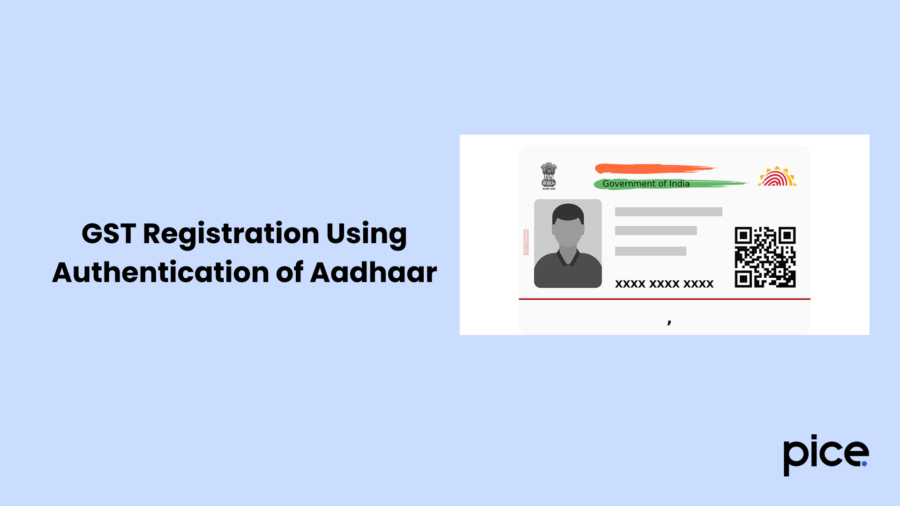
Here is the Aadhaar authentication process for GST registration:
Step 1: Select Aadhaar-based authentication when you apply for GST registration.
Step 2: Click on the ‘Yes’ option to receive the link for authentication on the registered email address and mobile number.
Step 3: Click on the Aadhaar authentication link.
Step 4: Fill in the Aadhar number and select the ‘Validate’ option.
Step 5: On successful validation, you will receive an OTP on your registered mobile number and email address.
Step 6: Fill in the OTP to complete the process.
Once you complete all the steps, you will receive the GST registration within 3 business days. Notably, if there are holidays between business days, you will receive the new GST registration based on the number of business days. Ensure you keep the mandatory GST registration certificate for future reference.
Strategies to Expedite GST Registration Approval Time
You can implement the following strategies to reduce the online GST registration application approval time:
- Provide Accurate Details: Providing correct information is crucial to avoid delays in GST registration approval. Ensure you check the details before you apply.
- Submit Proper Documents: Submitting clear copies of all the necessary supporting documents is essential for timely GST registration approval. As it is an online portal, ensure you upload clear copies of the relevant documents.
- Select Aadhaar Authentication: Aadhaar authentication improves the pace of GST registration approval. Speed and accuracy of details provided during GST registration would be enhanced if an Aadhaar authentication approach was adopted.
- Respond to Queries Raised by GST Authorities: Before granting approval for GST registration the GST authorities may raise certain queries pertaining to the registration application and the applicant is expected to respond to such queries at the earliest time possible or real-time.
- Usage of DSC Would Help: The use of a Digital Signature Certificate is a big leap toward speeding up the approval process for GST registration. Manual signature verification can be avoided, minimizing the approval time.
- Keep Track of Your Application Status: You should keep an eye on the status of the GST registration application from time to time, with the help of ARN, to determine if you will have to take any action for the smooth functioning of GST registration.
- Follow Up With GST Authorities: If you have some queries, you should contact GST authorities to follow them up for seamless approval of GST registration.
- Awareness About Changes in Regulations: The GST rules and regulations might change periodically based on the government and the GST Council's meetings. Ensure you are aware of the changes to avoid adverse legal consequences or challenges in the GST registration process.
- Choose Low Demand Application Time: The GST Council might find it challenging to approve GST registration during peak demand periods. Choosing a low-demand period instead of peak times can help you get faster approval for GST registration.
- Consider Professional Guidance: You can consult or consider assistance from professionals dealing with GST registration. This enables you to proceed with a seamless GST registration process.
Typical Timeline for GST Registration Approval

To understand the GST registration timeline, read the following pointers:
- The Central Board of Indirect Taxes and Customs (CBIC) necessitates an Aadhaar identity for GST registration. With the Aadhaar identity available, the timeline for GST registration has increased from 3 working days to 7 working days.
- A physical or document-based verification is prioritised before the tax authorities approve an application for GST registration if Aadhaar details are unavailable.
- If Aadhaar details are unavailable, the GST registration approval might take 21 to 30 days or longer. Notably, if the appropriate officer does not proceed with the approval within 7 days, the application for grant of registration shall be accepted.
Penalties from Tax Authorities for Not Registering Under GST
If an individual fails to pay GST within the deadline, a minimum penalty of 10% of the total GST amount will be applied. However, the maximum penalty limit is 10% of ₹10,000 in such a case. On the flip side, if a person does not pay GST intentionally, the penalty is 100% of the outstanding tax amount.
Conclusion
The timeline for GST registration might vary based on the availability of Aadhaar details. With Aadhaar details available, it might take up to 7 days for taxpayers to receive GST registration approval. However, in the absence of Aadhaar details, the GST registration approval process might take up to 30 days or more.
Ensure you provide the necessary details accurately to avoid further delays in GST registration approval. Moreover, uploading clear and relevant supporting documents is essential for a quick and hassle-free GST registration process.
💡If you want to streamline your payment and make GST payments via credit or debit card or UPI, consider using the PICE App. Explore the PICE App today and take your business to new heights.
 By
By 












